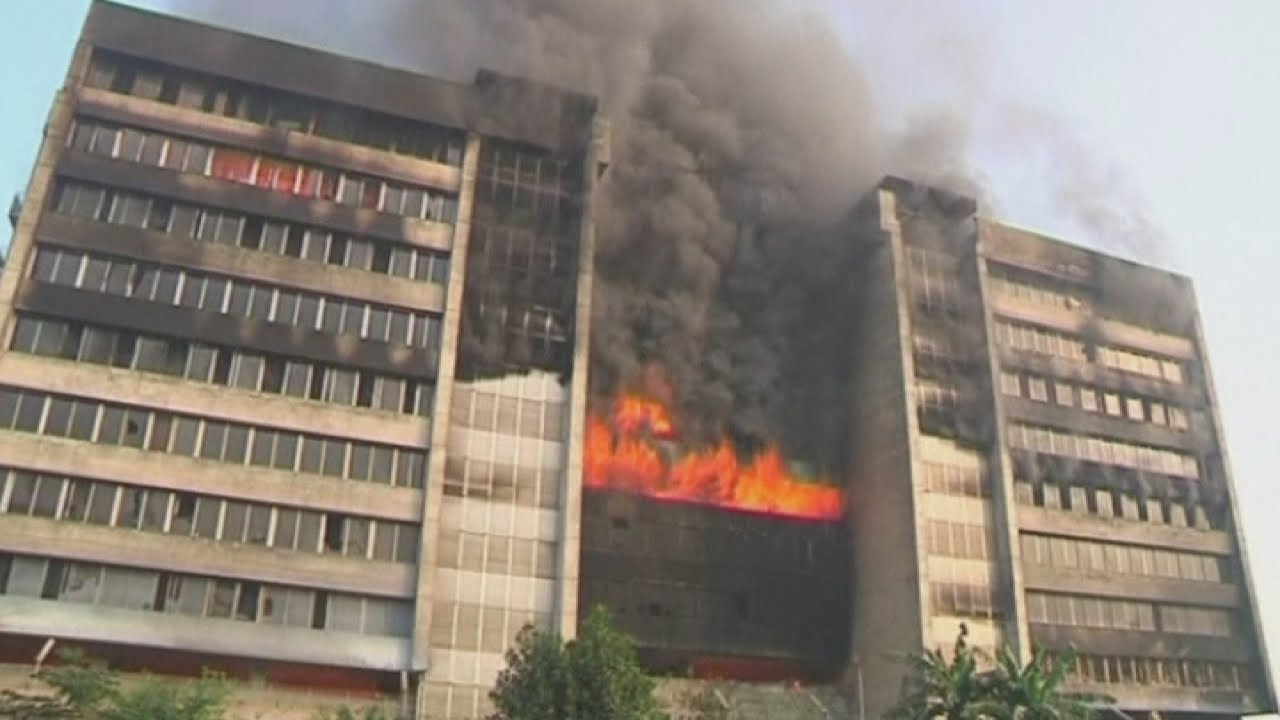Fires and building collapses are frequent in the country, particularly in the massive garment industry.
Dozens of people were killed in Dhaka, the capital of Bangladesh, on Thursday in a blaze that ripped through apartment buildings where chemicals were stored.
Fires and building collapses are common in the country – particularly in the multibillion-dollar garment industry – where building regulations are lax and volatile chemicals are often improperly kept.
Here are some of the worst incidents in Bangladesh.
Rana Plaza collapse
At least 1,130 people died when Dhaka’s Rana Plaza nine-storey factory complex collapsed in April 2013 – one of the world’s worst industrial tragedies.
Another 2,000 people were injured in the disaster, which highlighted the failure of many top Western fashion brands to protect workers in the poor developing countries where their goods are manufactured.
In 2016, a court ordered 38 people, including owner Sohel Rana, to face trial for murder for falsely certifying the factory complex as safe. Proceedings have dragged on, however, and prosecutors say a verdict could take five more years.
Click here to watch weekly episodes of Housing Development Programme on AIT
Dhaka chemical fire
Bangladesh’s deadliest industrial blaze was in June 2010, when 117 people died in a fire that ripped through one of Dhaka’s most densely populated areas.
The fire – fuelled by a chemical warehouse – destroyed several multi-storey apartment buildings and gutted a string of small shops.
 Garment factory blaze
Garment factory blaze
A fire swept through a nine-storey garment factory near Dhaka in November 2012, killing 111 workers. An investigation later found it was caused by sabotage and that plant managers had prevented victims from escaping.
“I broke open an exhaust fan in the second floor and jumped to the roof of a shed next to the factory,” said one survivor. “I broke my hand but survived somehow.”
Packaging factory fire
A fire triggered by a boiler explosion tore through a packaging factory north of the capital in September 2016, killing 24 people.
The blaze is thought to have spread quickly because of chemicals stored on the ground floor.
Gap factory fire
A blaze engulfed a multistorey factory outside Dhaka that made clothes for the high-street retailer Gap in December 2010. At least 27 people died in the fire and more than 100 were injured.
Many of the factory workers had left the building for lunch at the time, but witnesses described seeing dozens of trapped workers jumping from the 10th floor of the building to escape.
 Boiler explosion
Boiler explosion
An industrial boiler exploded at a factory, killing 13 people and causing part of the six-storey building to collapse, in July 2017.
Most of the plant’s 5,000 workers were off for the Eid holidays when the boiler exploded during maintenance work.
Source: aljazeera.com



 Garment factory blaze
Garment factory blaze Boiler explosion
Boiler explosion
